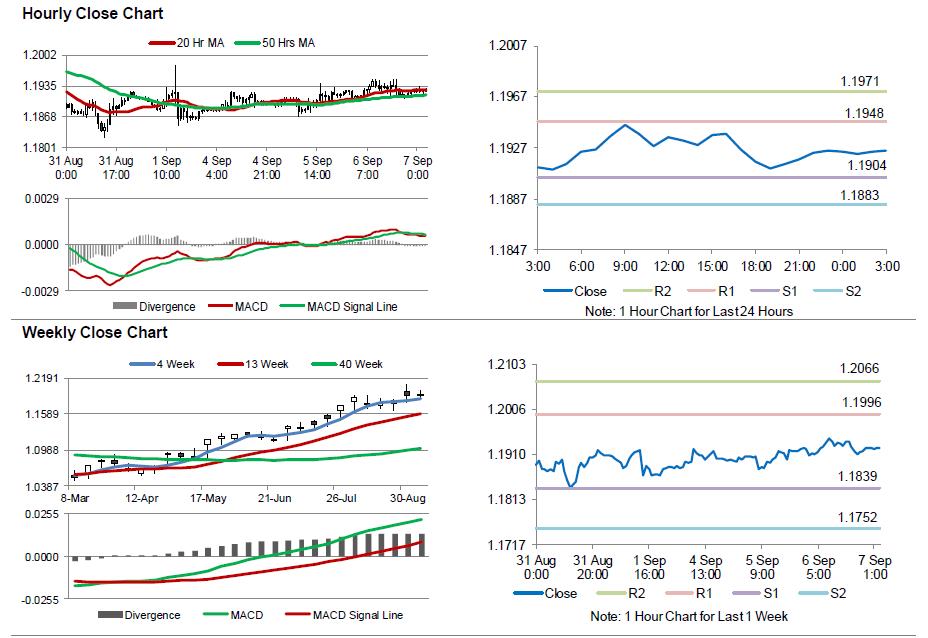For the 24 hours to 23:00 GMT, the EUR marginally rose against the USD and closed at 1.1925.
On the data front, Germany’s seasonally adjusted factory orders unexpectedly dropped 0.7% on a monthly basis in July, defying market expectations for an advance of 0.2%. In the previous month, factory orders had gained by a revised 0.9%. Additionally, the nation’s Markit construction PMI dropped to a level of 54.9 in August, after recording a level of 55.8 in the prior month.
The US Dollar declined against a basket of currencies, after the Federal Reserve (Fed) Vice Chairman, Stanley Fischer, surprisingly announced his resignation months before his term was due to end.
However, losses in the greenback were trimmed, after the US President, Donald Trump and top Democrats forged a deal to pass an extension of the debt limit for around three months.
Separately, macroeconomic data indicated that the US ISM non-manufacturing PMI advanced less-than-expected to a level of 55.3 in August, compared to a reading of 53.9 in the previous month, while markets were anticipating for a rise to a level of 55.5. Moreover, the nation’s trade deficit advanced to $43.7 billion in July, while investors had envisaged the nation’s trade deficit to rise to a level $44.7 billion. In the previous month, the nation had posted a revised deficit of $43.5 billion.
Other economic data showed that the US final Markit services PMI climbed less than initially estimated to a level of 56.0 in August, while the preliminary figures had indicated an increase to a level of 56.9. In the previous month, the PMI had registered a level of 54.7. Also, the nation’s mortgage applications rebounded 3.3% in the week ended 01 September, after recording a drop of 2.3% in the prior week.
Meanwhile, the Fed’s Beige Book report showed that the US economic activity expanded at a modest to moderate pace in July through mid-August, but signs of an acceleration in inflation remained slight. Also, it reported scant wage pressures, modest to moderate wage growth and worker shortages in numerous industries. Also, business contacts raised concerns about a prolonged slowdown in the auto industry.
In the Asian session, at GMT0300, the pair is trading at 1.1925, with the EUR trading flat against the USD from yesterday’s close.
The pair is expected to find support at 1.1904, and a fall through could take it to the next support level of 1.1883. The pair is expected to find its first resistance at 1.1948, and a rise through could take it to the next resistance level of 1.1971.
Moving ahead, traders will eye the European Central Bank’s (ECB) monetary policy meeting, scheduled later in the day, to get clarity on the central bank’s plans of tapering its bond-purchasing programme. Moreover, final reading on the Euro-zone’s 2Q GDP as well as Germany’s industrial production data for July, will be on investors’ radar. Separately, the US initial jobless claims data, set to release later in the day, will also attract market attention.
The currency pair is showing convergence with its 20 Hr moving average and trading above its 50 Hr moving average.

